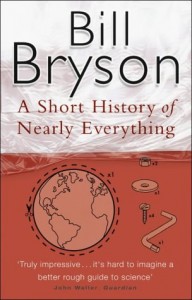 The Do’s of writing a good research bid:
The Do’s of writing a good research bid:
C – O – M – P – E – T- E
Clarity: avoid the overuse of technical jargon, spelling/grammatical errors and being overly descriptive or long-winded. Ensure that the bid is systematically structured and you make clear your aims and why these are important.
Other’s work: ensure that you present a balanced appraisal of the relevant literature in your field; that the research questions you identify are novel; that you exhaust any existing data rather than duplicate in your own plan of work.
Methods & workplan: ensure that you have a sufficient sample size; consult stakeholders; have clear interpretation plans; address ethical issues; have a realistic timeline; be clear on the coordination of co-investigators.
Potential impact & outcomes: state expected outcomes and impact and dissemination plans beyond the academic community.
Explain your costings: justify staff of requested grade; the need for equipment/travel.
Tune into the Funder: ensure the proposal fits with their aims, that you are eligible to apply and that the funder will cover the resources you request.
Expertise: if you are not experienced in winning bids, involve an experienced colleague/approach a collaborator and submit your proposal to RORP (where available)
The Don’ts of writing a good research bid
- Do not rush it; take time to plan and prepare
- Do not bid for a large grant if you are relatively new to grant bidding
- Do not proceed with work up to full bid and submission if you have any doubts about strategic fit or your eligibility
- Do not work in isolation
- Do not ignore the internal peer review scheme RPRS
- Do not assume that the funder will understand all acronyms or technical jargon
- Do not mistake a research bid for a literature review of the subject area when writing the background to your proposal
- Do not ignore difficult issues whether they are technical or ethical
- Do not promise the earth!
- Do not submit final bid without having an experienced colleague read over it first
- Do not propose referees (if invited to do so) who you have published/worked with
Checklist to Complete Prior to Proposal Submission
- Does your research fit the funders remit?
- Do you meet the eligibility criteria for the funding scheme?
- Is the research question/hypothesis you are asking an important one?
- Are the research aims clearly stated?
- Have you provided a bibliography and appraisal of current work in the field that demonstrates your familiarity with the subject?
- Is the novelty value of the proposed research argued well?
- Have you demonstrated the potential social and economic impact of the proposed research?
- Have you demonstrated that the approach you will use is the best way to address the research question?
- Have you documented a contingency plan in case of unexpected controls/lack of participants etc?
- Have you included any pilot data to help the funders gain confidence?
- Are the roles of the co-PIs clearly defined and their expertise demonstrated?
- Have you eliminated technical jargon and spelled out any acronyms?
- Have you ensured there are no grammatical or spelling errors in your application?
- Have you ensured you are within the word limit for the application?
- Does your Research Director/experienced colleague think it reads well?
Who can I ask for further help?
Contact Caroline O’Kane in the Research Development Unit for advice on what makes a good proposal.
Caroline also runs the University’s Research Proposal Review Service (RPRS). In addition to your proposal being peer reviewed, Caroline can advise on funding criteria, funders and eligibility issues.
For the best results please get in touch with Caroline as soon as you start developing a funding proposal – the RPRS can support your bid in more ways than you think.
Find out more:


 On Friday last week the RDU organised two bidding workshops with John Wakeford of the Missenden Centre.
On Friday last week the RDU organised two bidding workshops with John Wakeford of the Missenden Centre.

 The Leverhulme Trust has funding available for research programme grants. This funding is for projects of up to five years duration and overarching projects should address a central theme of significance through the undertaking of a series of distinctive sub-projects. The 2012 competition themes are:
The Leverhulme Trust has funding available for research programme grants. This funding is for projects of up to five years duration and overarching projects should address a central theme of significance through the undertaking of a series of distinctive sub-projects. The 2012 competition themes are:
 The University Research and Enterprise Forum (UREF) agreed yesterday to expand the five working days internal deadline to applications made via the E-Gap2 and Leverhulme Online e-submissions systems. This will affect all applications made to the following funding bodies:
The University Research and Enterprise Forum (UREF) agreed yesterday to expand the five working days internal deadline to applications made via the E-Gap2 and Leverhulme Online e-submissions systems. This will affect all applications made to the following funding bodies:

 Not necessarily! The lay summary is an extremely important part of most research bids. Most researchers think they write it well, and yet many bids fail because it is not ‘lay enough’. The topic was debated at this year’s ARMA conference (Association of Research Managers and Administrators) in bonnie Glasgow. The highlights of the session are detailed below.
Not necessarily! The lay summary is an extremely important part of most research bids. Most researchers think they write it well, and yet many bids fail because it is not ‘lay enough’. The topic was debated at this year’s ARMA conference (Association of Research Managers and Administrators) in bonnie Glasgow. The highlights of the session are detailed below. Painting the bigger picture: The lay summary is your first chance to impress the reviewer! Reviewers are very busy and in the majority of cases the lay summary is the first (and sometimes the only) part of a grant application that he/she will read. It is therefore vitally important that it is interesting, easy to read and conscise. It needs to give an overview of the whole project – the background, aims and expected impact.
Painting the bigger picture: The lay summary is your first chance to impress the reviewer! Reviewers are very busy and in the majority of cases the lay summary is the first (and sometimes the only) part of a grant application that he/she will read. It is therefore vitally important that it is interesting, easy to read and conscise. It needs to give an overview of the whole project – the background, aims and expected impact. Be written in plain English: A strong lay summary will always explain any technical terms used, spell out abbreviations, and avoid using jargon. It will also be written in ‘plain English’ but what exactly does this mean?
Be written in plain English: A strong lay summary will always explain any technical terms used, spell out abbreviations, and avoid using jargon. It will also be written in ‘plain English’ but what exactly does this mean? Simple analogies should be used to help the reader make sense of complex ideas.
Simple analogies should be used to help the reader make sense of complex ideas. 










 BU Festival of Social Sciences invite at RNLI
BU Festival of Social Sciences invite at RNLI MaGPIE Presents at UK Parliament: From Mass Graves to Courtroom
MaGPIE Presents at UK Parliament: From Mass Graves to Courtroom Festival of Social Science: Introducing drowning prevention in Bangladesh
Festival of Social Science: Introducing drowning prevention in Bangladesh BU PhD student attending HIV conference on scholarship
BU PhD student attending HIV conference on scholarship ECR Funding Open Call: Research Culture & Community Grant – Apply Now
ECR Funding Open Call: Research Culture & Community Grant – Apply Now MSCA Postdoctoral Fellowships 2025 Call
MSCA Postdoctoral Fellowships 2025 Call ERC Advanced Grant 2025 Webinar
ERC Advanced Grant 2025 Webinar Horizon Europe Work Programme 2025 Published
Horizon Europe Work Programme 2025 Published Horizon Europe 2025 Work Programme pre-Published
Horizon Europe 2025 Work Programme pre-Published Update on UKRO services
Update on UKRO services European research project exploring use of ‘virtual twins’ to better manage metabolic associated fatty liver disease
European research project exploring use of ‘virtual twins’ to better manage metabolic associated fatty liver disease